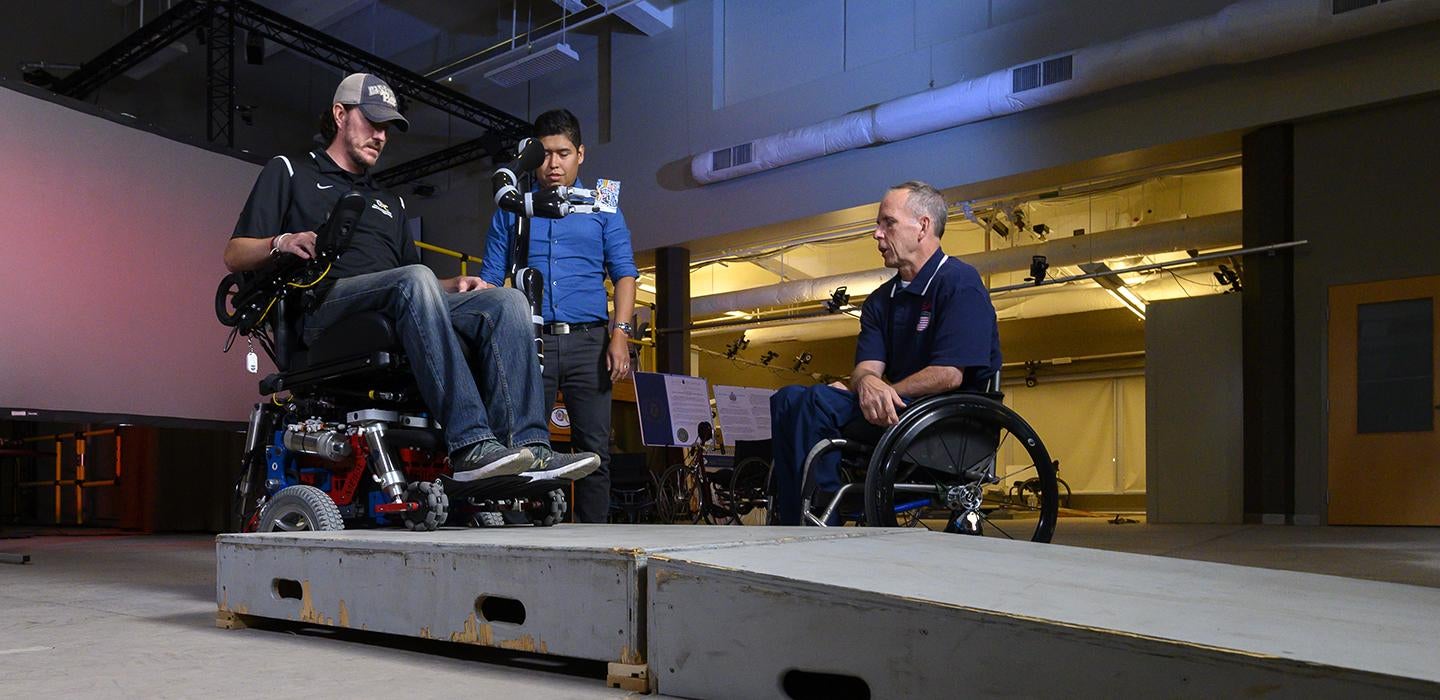
Subscribe to Pittwire Today
Get the most interesting and important stories from the University of Pittsburgh.The University of Pittsburgh has joined a select pool of 56 organizations — and just two universities — to compete for as much as $10 billion in contracts from the Department of Defense to develop health care innovations benefiting both wounded warriors and civilians over the next five years.
“Southwestern PA has one of the highest populations of military veterans in the country, and we at Pitt are all in on supporting both the Department of Defense and our VA community,” said Ron Poropatich, a School of Medicine professor and one of the project’s two leaders. “We’re trying to build out a defense innovation economy for Pittsburgh.”
Over the next five years, the Defense Health Agency as part of its Omnibus IV solicitation will issue requests for proposals to complete contracts related to military health, spanning research areas such as trauma care, veteran quality of life and acute field care. Pitt, leading a consortium of eight academic and 64 industry partners, will pursue those contracts. The McGowan Institute for Regenerative Medicine and the Center for Military Medicine Research will be at the helm.
“This confirms that the Department of Defense recognizes Pitt as a nationally known, reliable and valued team player in medical research,” said Senior Vice Chancellor for Research Rob Rutenbar. “Pitt is now positioned to deliver real health solutions by leading on R&D projects and partnering on translational science that will help improve the lives of service members and military health system patients over the coming decade.”
“We are delighted to build on the long-standing medical research commitment to the Department of Defense’s Defense Health Agency with our deep and talented Schools of Health Sciences at Pitt in collaboration with many other outstanding university and industry partners,” said Senior Vice Chancellor for the Health Sciences and the John and Gertrude Petersen Dean of Pitt’s School of Medicine Anantha Shekhar.
Pitt’s legacy of defense-related research
The accomplishment is a testament to Pitt’s recent and growing success in conducting Department of Defense-sponsored research, Poropatich said. He and other University researchers have engaged in a years-long effort of aligning Pitt research with the needs of the armed services, including by working closely with physicians at military hospitals to understand their needs as well as what they predict their needs may be in future conflicts.
Those efforts have borne fruit: The Center for Military Medicine Research, which Poropatich leads, has grown to assisting with about $55 million a year in Department of Defense funding, driving Pitt research that advances health care for service members and veterans.
“We span the entire spectrum, from medical research to getting technology to companies and patients, like few universities are able to,” said project leader William Wagner, a distinguished professor of surgery, chemical engineering and bioengineering and director of the McGowan Institute.
One example is the work of Department of Orthopaedic Surgery Associate Professor Anthony Kontos, whose research on diagnosing concussions by measuring rapid eye movements has made its way to the battlefield as part of a formal system for evaluating concussion symptoms.
Advances like these also lead to improvement in health care off the battlefield, especially in rural areas where patients may not be able to quickly get access to a hospital. “Research on traumatic brain injuries, post-traumatic stress — everything in our portfolio has direct relevance to civilian needs,” said Poropatich.
Wagner also cited Pitt’s Center for Vaccine Research and Human Engineering Research Laboratories (pictured above) as leaders in two areas of keen interest to the Department of Defense.
How small businesses will play a role
Of the agency’s four market segments, Pitt will lead efforts to pursue contracts in two — research and development along with translational science support and services — and has partnered with other organizations to pursue contracts in the other two areas. After the five-year term of the request, the Defense Health Agency may extend it for an additional five years with more funding.
The agency requires that one quarter of each project be completed by an industry partner — so Pitt’s consortium includes more than 50 small businesses as well as other industry partners, the result of an effort by Director of Partnerships Brian Vidic and others in the Office of Industry and Economic Partnerships to build lasting relationships with industry. The group involves a broad mix of companies across the United States with expertise in research and translation, and that number will only increase over the next five years as Pitt adds more partners.
“Innovation is a team sport,” said Office of Industry and Economic Partnerships Director Scott Morley. “Collaboration with industry is crucial to ensuring that new health care solutions can be delivered to patients, including our men and women in uniform. Our partners in this effort bring skills in clinical and commercial translation that are complementary to Pitt’s research and development expertise.”
Along with a number of women-owned businesses and disabled veteran-owned businesses, the consortium includes more than a half dozen startups that have been spun out of the University.
“Pitt is very committed to this whole ecosystem that has been designed to drive true impact from research,” said Morley. “And we’ve set ourselves up for success on that front.”
More than just medicine
At Pitt, the effort has stretched across the entire University, including the Office of Sponsored Programs, the School of Pharmacy’s Program Evaluation Research Unit and academic units across the Schools of Health Sciences and Swanson School of Engineering. Pitt will also collaborate with other universities to pursue contracts, including Carnegie Mellon University, Howard University and North Carolina A&T State University, among others.
The result is a team ready to jump on potentially billions of dollars of contracts at a moment’s notice.
“I don’t know that 20 years ago we would have had the track record to do this. It reflects broad effort across the University and the health system in the area of military medicine,” said Wagner. “We have the history, the skills and the partners, and we can show our technologies getting to patients. I think our team is going to be very competitive.”
— Patrick Monahan, photo by Tom Altany


